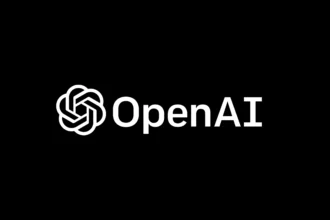Is OpenAI Using Auth0? Exploring the Integration of OpenAI with Auth0
The question of whether OpenAI is using Auth0 is intriguing, especially in the world of secure API authentication and innovative AI. As more developers and organizations adopt robust solutions for managing user authentication, combining OpenAI’s AI capabilities with Auth0’s security features seems like a match made in tech heaven. In this article, we’ll delve into how you can integrate OpenAI with a custom API, while securing it using Auth0, creating a fortress that enhances user authentication. Buckle up, because we’re about to dive deep into the tech behind the scenes!
Table of Contents
ToggleGetting Started: Why OpenAI and Auth0 Make Sense Together
Before we plunge into the technical depths of this integration, it’s essential to understand the foundational concepts behind OpenAI and Auth0. OpenAI, known for its revolutionary AI language models like ChatGPT, has empowered countless developers to leverage artificial intelligence in their applications. On the other hand, Auth0 is a powerhouse in the authentication realm, providing developers with streamlined processes to manage user identities securely.
Now, imagine a scenario: You’ve built an application that leverages the AI capabilities of OpenAI to provide users with personalized responses based on their queries. However, your application accesses sensitive data or functionalities. You need to ensure that only authenticated users can access your custom API endpoints. This is where Auth0 comes to the rescue! By tying OpenAI’s impressive capabilities with Auth0’s security features, we can have an integrated system that’s both powerful and secure.
Understanding the Workflow
So, how exactly does this integration work? Here’s a simple yet effective workflow:
- A user logs into your application using Auth0.
- Upon successful authentication, Auth0 generates a JSON Web Token (JWT) for the user.
- Your custom application can then use this token to gain access to protected API endpoints.
- OpenAI’s models (like ChatGPT) utilize this authentication token to interact with your API securely.
In essence, users authenticate through Auth0, obtaining tokens that carry information about their identity, permissions, and roles. This information is key to making sure that only the right people can make requests to OpenAI through your custom API.
Setting Up Auth0: The First Step
To get started with this integration, the first step is to set up an Auth0 account. Here’s a step-by-step guide to walk you through that process:
- Create an Auth0 Account: Go to the Auth0 website and sign up for a free account. It’s as simple as entering your email address and choosing a password.
- Create a New Application: Once logged in, navigate to the Applications section and click on the “Create Application” button. Choose a name for your application, select the type that is relevant (for instance, “Single Page Application” for React or Angular apps), and hit “Create”.
- Set Up Application Configuration: Configure the application settings, including allowed callback URLs, logout URLs, and Web Origins. These configurations are crucial for ensuring smooth redirection during authentication.
- Create an API in Auth0: Head to the APIs section and create a new API. Assign it an identifier (like `https://your-api`) and define the signing algorithm (preferably RS256 for added security).
By the end of this setup, you’ll have a secure Auth0 environment ready to handle authentication for your application!
Integrating OpenAI with Your API
Next, we need to connect OpenAI to your custom API. This involves several steps, but once set up, it is quite seamless.
1. Set Up Your Custom API: You’ll need a backend server to handle API requests. You can use Node.js with Express or any other technology you’re comfortable with. Here’s an example of what that would look like in a Node.js environment:
const express = require(‘express’); const cors = require(‘cors’); const jwt = require(‘express-jwt’); const jwksRsa = require(‘jwks-rsa’); const app = express(); app.use(cors()); // Middleware for JWT validation const checkJwt = jwt({ secret: jwksRsa.expressJwtSecret({ cache: true, rateLimit: true, jwksRequestsPerMinute: 5, // URL to Auth0 public keys jwksUri: `https://YOUR_AUTH0_DOMAIN/.well-known/jwks.json` }), audience: ‘YOUR_API_IDENTIFIER’, issuer: `https://YOUR_AUTH0_DOMAIN/`, algorithms: [‘RS256’] }); // Secured Route app.get(‘/api/secure’, checkJwt, (req, res) => { // Use OpenAI here! For example, call the OpenAI API using the token. res.json({ message: ‘Access to secure data!’, user: req.user }); }); app.listen(3000, () => console.log(‘API running on http://localhost:3000’));
2. Calling OpenAI GPT: If a user accesses your API, you can then call OpenAI using the authenticated context. Here’s how you can interact with OpenAI’s API in Node.js:
const { Configuration, OpenAIApi } = require(‘openai’); // Configuration for OpenAI API const configuration = new Configuration({ apiKey: process.env.OPENAI_API_KEY, // Store this in environment variable for security }); const openai = new OpenAIApi(configuration); // Using OpenAI in your secured route app.post(‘/api/openai’, checkJwt, async (req, res) => { const prompt = req.body.prompt; try { const response = await openai.createCompletion({ model: “text-davinci-003”, prompt: prompt, max_tokens: 100, }); res.json(response.data.choices[0].text); } catch (error) { res.status(500).send(error); } });
In this example, we first authenticate using Auth0 and then utilize OpenAI’s API. The power of AI is now covered in a secure shell!
Protecting Sensitive Data
One of the key benefits of using Auth0 alongside OpenAI for API access is the protection of sensitive data. Authentication tokens (like JWTs) carry essential information that dictates what the user can access. It’s crucial to set up role-based access control (RBAC) in Auth0 so that you can differentiate between user roles and permissions.
- User Roles: Create roles in Auth0 to clearly define user capabilities. For example, a user with the “admin” role might have access to sensitive AI functions, while a guest might only explore general AI outputs.
- Data Encryption: Ensure that any sensitive data passed through your requests is encrypted. This adds an extra layer of security to user interactions.
- Monitoring and Logging: Use Auth0’s monitoring features to track user authentication and interaction. It’s vital to identify any unauthorized access attempts early on.
The synergy between OpenAI and Auth0 creates a fortress where AI capabilities can thrive securely, making it an excellent bet for developers aiming for robust applications.
Testing Your Integration
Once you’ve performed the integration, testing your setup is crucial. Here’s a practical structure for conducting tests effectively:
- Unit Tests: Create unit tests for your API endpoints to verify that they return the expected responses.
- Authentication Tests: Ensure that unauthorized users cannot access the API endpoints through invalid tokens.
- Integration Tests: Test if the interaction between OpenAI and your custom API functions as expected. Call the endpoint and check if you receive responses from OpenAI.
Conclusion: Leveraging the Best of Both Worlds
So, is OpenAI using Auth0? While OpenAI may not be exclusively using Auth0 per se, the integration can significantly enhance the security of AI-driven applications. By following the outlined steps, you’ll have an operational setup where your custom GPT is well-protected behind Auth0’s authentication walls.
In a world where sensitive data privacy is paramount, pairing OpenAI with a robust authentication platform such as Auth0 is not just a good idea — it’s essential. This combination doesn’t just empower your applications; it also gives your users peace of mind that their data is secure while they interact with your AI solutions. Ready to build your next big project with this powerful integration? Your journey begins now!



